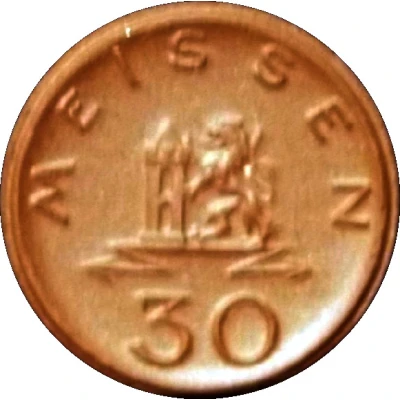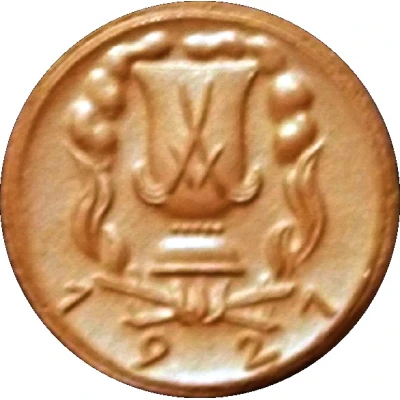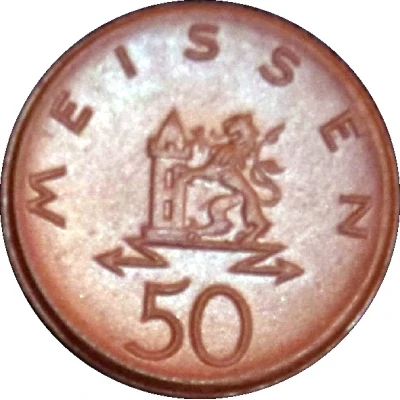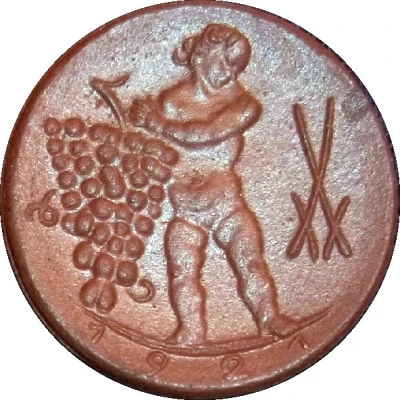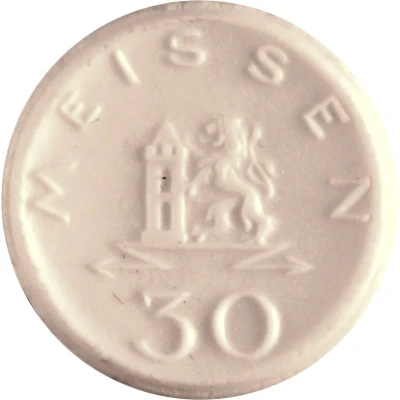
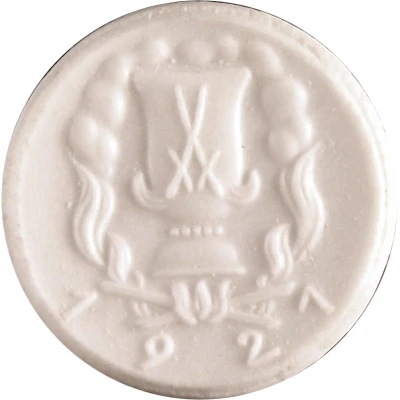

© sinkovics
30 Pfennigs - Meissen
1921 year| Porcelain (white) | 1.4 g | 18.5 mm |
| Issuer | City of Meißen (Federal state of Saxony) |
|---|---|
| Period | Weimar Republic (1918-1933) |
| Type | Standard circulation coin |
| Year | 1921 |
| Value | 30 Pfennigs (30 Pfennige) (0.30) |
| Currency | Mark (1914-1924) |
| Composition | Porcelain (white) |
| Weight | 1.4 g |
| Diameter | 18.5 mm |
| Thickness | 2.8 mm |
| Shape | Round |
| Technique | Milled |
| Orientation | Medal alignment ↑↑ |
| Demonetized | Yes |
| Updated | 2024-10-04 |
| Numista | N#20405 |
|---|---|
| Rarity index | 47% |
Reverse
Chalice surrounded by ornamental design, date at bottom
Script: Latin
Lettering: 1921
Edge
Plain
Interesting fact
One interesting fact about the 30 Pfennigs - Meissen 1921 coin is that it was made of porcelain, which is a unique material for coins. Porcelain is a type of ceramic material that is known for its whiteness, translucency, and strength. The use of porcelain in coin production was a deliberate choice by the City of Meißen to highlight the city's long history of porcelain production, which dates back to the 18th century. The Meissen porcelain factory, located in the city, was one of the first and most famous porcelain factories in Europe, and it was known for producing high-quality porcelain products, including tableware, figurines, and other decorative items. The use of porcelain in the production of the 30 Pfennigs coin was a way to showcase the city's expertise in this field and to create a unique and distinctive coin that would stand out from other coins in circulation.
Price
| Date | Mintage | VG | F | VF | XF | AU | UNC |
|---|---|---|---|---|---|---|---|
| 1921 | 10000 | - | - | - | - | - | - |
Values in the table are based on evaluations by sales realized on Internet platforms. They serve as an indication only for 30 Pfennigs - Meissen 1921 coin.
